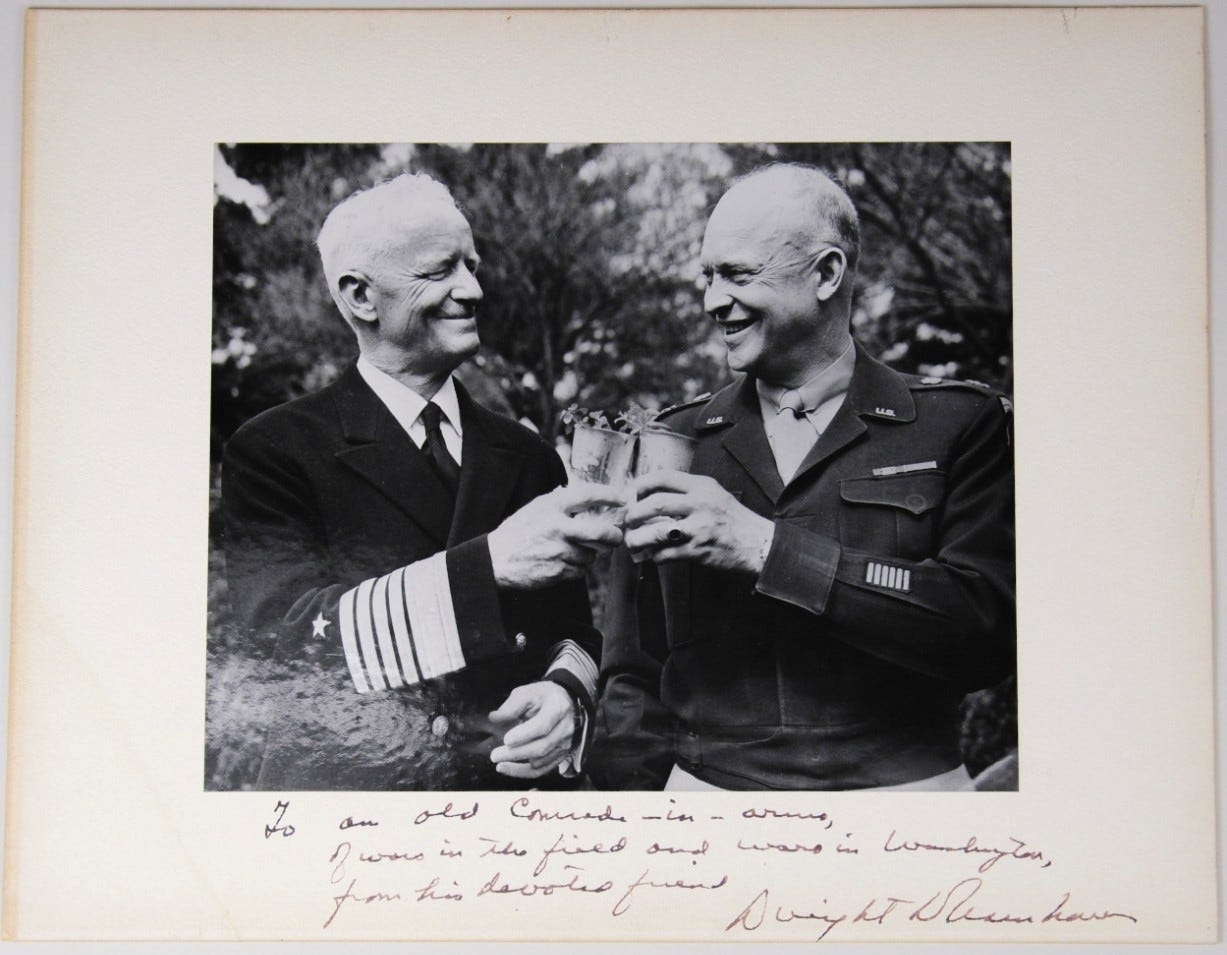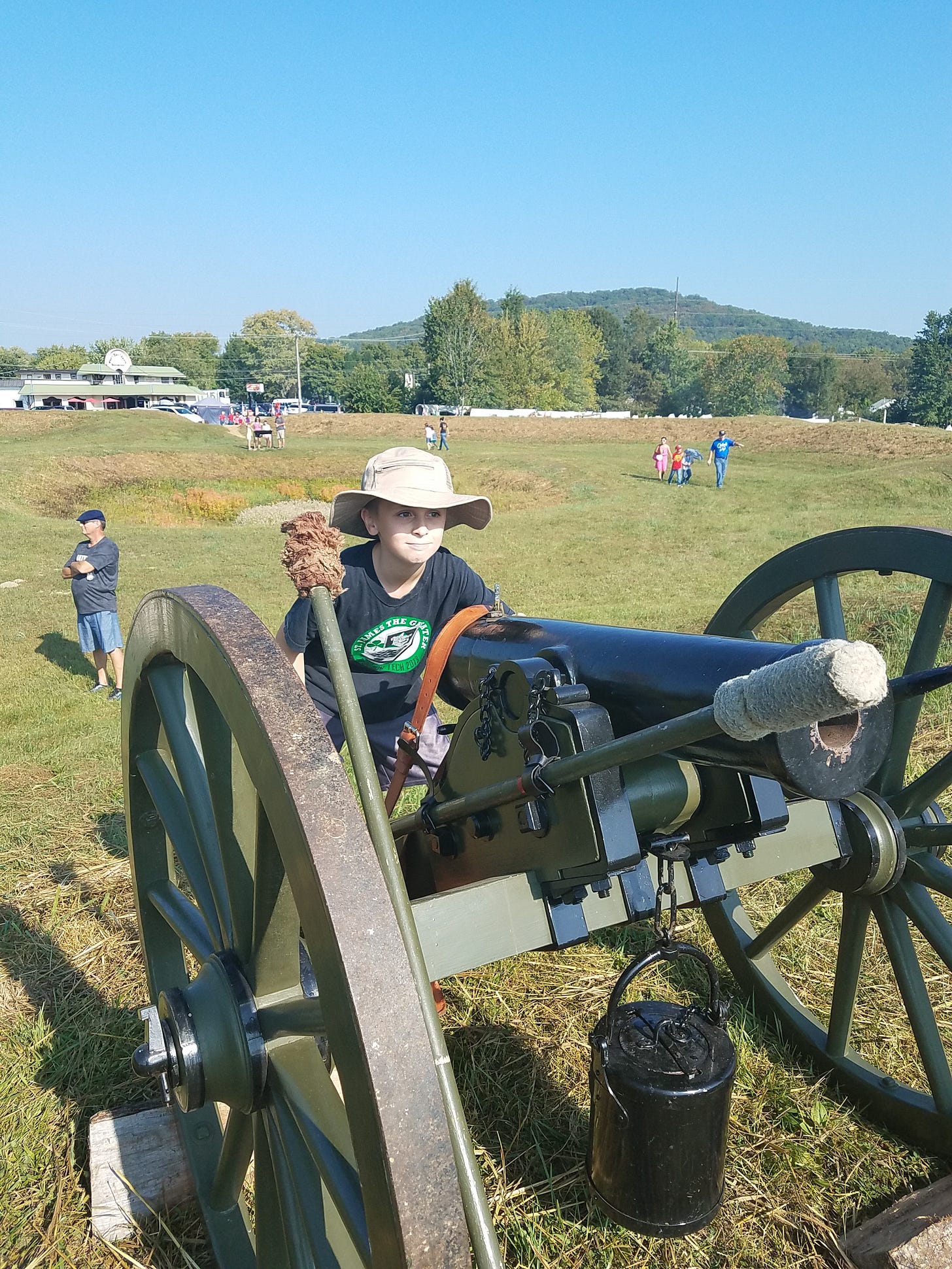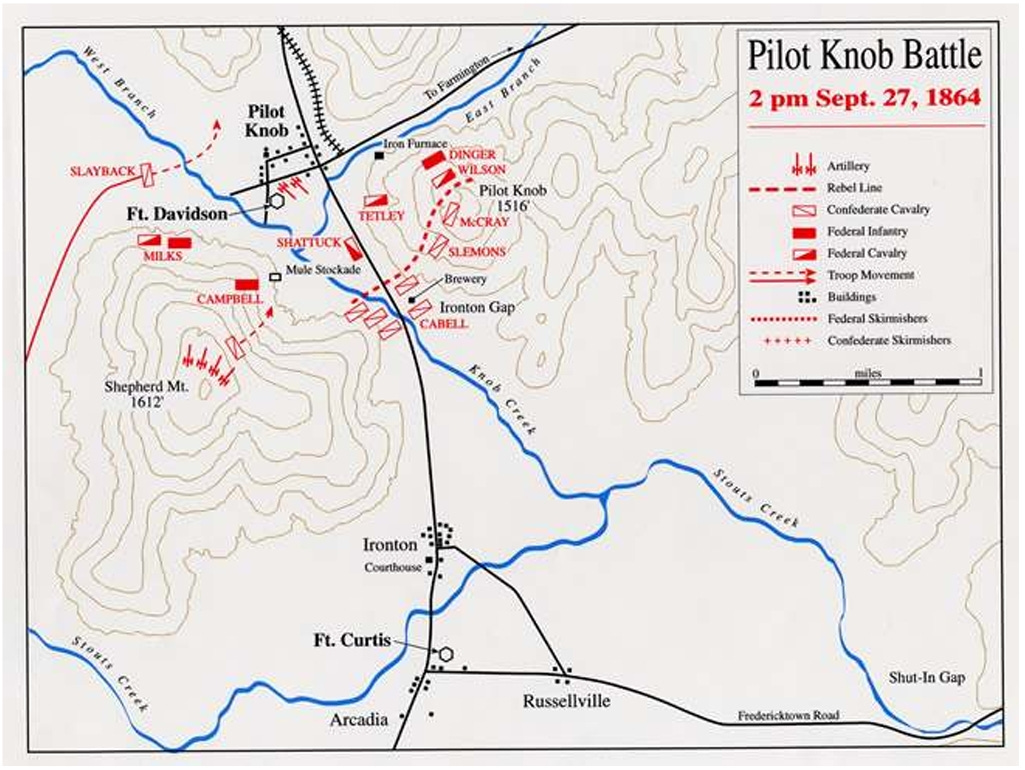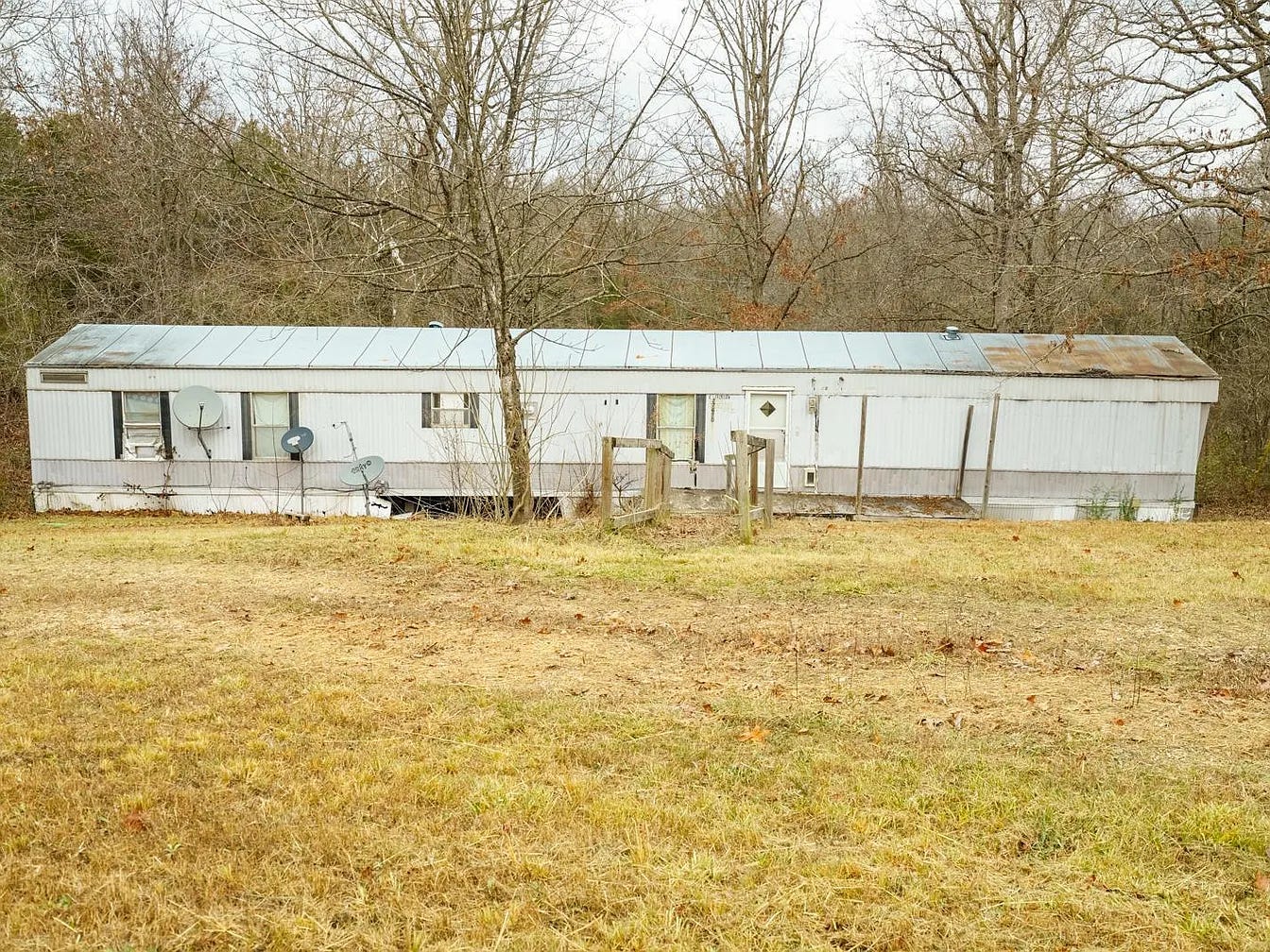A Game of Historical Telephone, The Great Chain of Testimony
A long time ago in college, I remember playing a game where everyone had to tell the story of an historic event that they were personally connected to.1 My lame entry was witnessing the burial train of President Eisenhower as his remains made their way west to Abilene, Kansas on that spring day in 1969. As it so happened, I was in St. Louis as the train passed through. The house I was in coincidentally bordered the train tracks that the train moved on. The irony of the serendipitous nature of that moment was not lost on thirteen year old David Dwight Shaw for you see, I was named after David Dwight Eisenhower. He is better known as Dwight David when later in life his two names were reversed.

Others told their stories but then it became a game of who could go the furthest back in time via second hand and third hand accounts. The narrative drifted into things like, “my dad was on the grassy knoll two days after the JFK assassination and he told me all about it.” This kind of tangible artifact may be the ultimate thrill for historians short of a time machine, to get so close to events that are otherwise just ink on paper. This game would come around to me in an unexpected way.
Around 1995, I was working in a bank, as an investment specialist. Most of the clients were older, with extra savings to squirrel away. One in particular was a long retired gentleman by the name of Emory Leon Crawford. He was such a great guy and I always looked forward to seeing him. After concluding business we would just chat for a few minutes, which one day led to the story of the Battle of Pilot Knob.
“My grampa told me all about it.”
”The Battle of Pilot Knob?, He personally told you about it?”
”Yep. He was a horse holder.”
” A horse holder?”
”The riders dismounted on the back side of Shepard’s Mountain and attacked on foot, so somebody had to stay behind and keep the horses calm on the picket line. He was fairly young so they put him to the job.”
”What was it like?”
”The confederate army came up from Arkansas but there were a lot of local boys that joined in. Not many had proper guns. Mostly knives and pitchforks and anything they could get their hands on. Some were barefoot. They were brave but the Union (Army) had rifles and cannons.” His voice trailed off… “It was a slaughter.”
I took that as my moment to wrap things up. We shook hands and said goodbye. Later, I reflected on the conversation and thought, “Could that be right? Or was it just a story?” I checked his date of birth on my records and then did some simple calculations. It checked out. He could easily have a grandfather that was an older boy or young man around 1864, and I couldn’t believe Leon would make up such a story. It had to be real.
The Battle of Pilot Knob
Some years later, I found myself visiting the Fort Davidson museum at the site of the Battle of Pilot Knob.2 The story of the battle was incredible.3 It is not well known like Gettysburg or Vicksburg but it is a great tale, nonetheless. Notice the blast crater in the photo background below.

The Confederate Army was nearly defeated and desperate by September, 1864. Confederate General Sterling Price staged an aggressive cavalry attack up through Missouri aiming to capture St. Louis in a desperate gamble. The poor strategic decision to capture Fort Davidson on the way to St. Louis led to his downfall, taking heavy casualties and disrupting the planned attack on St. Louis.
The fort location itself was poorly chosen, sitting at the bottom of a bowl formed by three nearby mountains; Cedar Mt., Shepard Mt. and Pilot Knob. Thinking his 12,000 man cavalry unit could easily capture the small vulnerable Union fort defended by less than 1,500 men, Price did not reckon on superior fire power from a fortified position. After a full day of fighting with multiple attacks barely repulsed, the outnumbered Union General Ewing made the decision to abandon the fort. He ordered the horse hooves bound in burlap rags and his entire army snuck out quietly in the night. Several men stayed behind to put a fuse to the powder magazine. The resulting explosion rattled windows in St. Louis, ninety miles away. In the morning, General Price was in a rage to find the Union Army had slipped away. It was to be the last major Confederate advance up through Missouri.
In a perfectly delicious act of Karma, a story emerged after the war from an anonymous Confederate soldier known only as “Smith.” He relayed that no sooner had the Confederate cannons been placed on Shepard Mt., the artillery soldiers asked their officer for a swig of his whiskey. He refused to share and shortly thereafter, a well aimed cannon hit from a Union canon down in the fort, took out both the Confederate officer and his cannon.
A more detailed account of the battle can be found here:
And here:

Was the story true?
Over a period of years, I read more about the Battle of Pilot Knob comparing the official written versions with the version told by Mr. Crawford. The records reflect that the Confederate forces positioned four cannon on Shepard Mt. with which to bombard the fort. Horses would certainly have been used to haul the cannon up the mountain, so quite plausibly several men would have been employed to tend the horses. In addition, one public comment mentioned that 3,000 of Price’s 12,000 men were not equipped with arms. This did not blunt the effectiveness of his army however. When men would fall in battle their weapons would be salvaged and handed off to an unarmed man. So, Leon’s claim that they were poorly armed with knives and pitchforks holds true as well. This also explains why Price made the decision to attack Ft. Davidson in the first place, needing guns and ammunition. The official records also list the Confederate units that provided cavalry for this action. Cavalry units from all over the Western theatre including Quantrill’s were cobbled together. I could find no mention of locals joining in, yet the desperate improvised nature of the attack does not rule it out.
Almost all of Leon’s story matches the historical record. The only surprise was finding that Leon’s grandfather was born in 1835, making him age 29 at time of the battle. Leon’s life overlapped with his grandfather who died in 1928 when Leon was ten years old. In other discussions, Mr. Crawford spoke matter of fact about Quantrill, making me wonder if his grandfather rode with Quantrill? I so wish I would have asked more questions or filmed an interview.
Whiz - Splat !!!
Sometime around 1990, I was camping with my 5 year old son at one of our favorite camping spots. It was just an informal clearing in the Bell Mountain Wilderness hiking area. By road it is twenty miles from Ft. Davidson but as the crow flies, only ten miles. I was awakened at about midnight with the sound of shot gun blasts which did not bother me near as much as the resulting pellets hitting the tree leaves over my head. There is a peculiar whizz splat sound that when you hear it, there is no doubt that shotgun pellets are splatting above your head. I did not have a weapon with which to return fire, so my only recourse was to stay dark and move to a covering position. Five year old Adam was dead asleep, as I crouched low and pulled him by one arm behind me down a gulley. I was not terribly worried since the men shooting were aiming high, perhaps intentionally, and we were lying flat in a low gully. I kept moving in the pitch black darkness until we were 50 yards or so away from our camp and then just lay quiet. To my son’s credit when I whispered to him to be quiet, he complied perfectly, perhaps too groggy to make a fuss. We could hear their voices, indistinct from that distance, and eventually they got in their pickup truck and drove away. As we lay there in complete darkness, my son fell back asleep and I just lay there listening to the tree frogs intent on finding a mate for the night.
I pity more than fear the men who shot at us that night. It seems I had camped “in the wrong spot.” Their families have lived on the mountain for two hundred years or so. They have hunted there and harvested timber and a hundred other things important to their lives. Only relatively recently had the Federal government taken it away and created an arbitrary wilderness “protected” from logging and hunting. Now city people with branded outdoor gear claim the land. Patagonia, North Face and Marmot have replaced Osh Kosh, Carhart and Ariat.
On another camping trip to the same area, I needed firewood. Driving through the town of Bismarck I spotted a large pile of oak firewood in front of a bedraggled trailer home. Stopping, I approached the man who lived there and asked if I could buy some firewood. He told me to help myself and when I tried to give him money he refused, offended. It was not his way and abruptly went inside. A moment later I saw his young wife with two snot encrusted toddlers. I gave her twenty dollars and being more practical than her husband, accepted. Per capita income in Bismarck is $12,000. About half of the population are very poor young white people with small children. The other half are old white people. One percent are Indians and there are virtually no Blacks or Asians. The entire town is comprised of people that have been economically left behind. Confederate flags are not common, but you still see one every now and then. The war is not really over.
Epilogue
The Civil War is not my favorite time period because it is just depressing to the point of tears. Neighbor against neighbor, it was the first American conflict where a common end was for bodies to be blown so totally apart, there was nothing left to bury.4 The disease was worse if that can be believed. And based on my own findings, a typical end for Union soldiers that survived the war was to die within a few years of lingering wounds, alcoholism, consumption and just plain despair. Still, the Confederate soldiers had it worse.
Yet here we find ourselves as a nation dancing with division once again. The great reveal has shown us what we are and it is not pretty. The rural poor in Bismarck can barely comprehend the extravagant spending in our nation’s capital. Meanwhile they slowly dissolve in a broken down trailer in rural America with television and meth to numb the reality.
I have seen rural poverty, the kind that stops at the end of a long road, junked cars with trees growing through the hood, the end of the line. And I have sat in some of the most lauded boardrooms in New York and Boston. I am more at home with the professional class, but at heart, I still identify with the country boys shooting at me in the dark. I understand their rage, the desire to reclaim something taken.
What are we to do? The U.S. national debt is now 37 Trillion dollars.5 The annual deficit is 1.8 Trillion. The interest alone on the national debt is a Trillion dollars per year! City and country, rich and poor, we are all just one thread away from an incomprehensible unraveling. So, should you ever find yourself metaphorically lying in a ditch wondering why on earth people do what they do, remember this tale. Remember the Battle of Pilot Knob. Most of all remember the people left behind.
“The past is never dead. It's not even past."6
Known as The Telephone Game of History or The Great Chain of Testimony or Historical Telephone. This game involves tracing back a piece of information or story through personal accounts from one person to another to see how far back in history one can go before the information becomes unverifiable or too distorted to be reliable. - Grok
My grandson and I attended the reenactment of the legendary battle. We saw a young lady of about age five calmly watch the battle reenactment with shooting and soldiers falling ”dead.” After the show the “dead” soldiers got up off the ground to leave the field. The little girl started screaming, “They’re Alive!! Oh my God, They’re Alive!!”
Busch, Walter E. Fort Davidson and the Battle of Pilot Knob: Missouri's Alamo. Civil War Sesquicentennial Series. (Charleston, SC : History Press, 2010).
Drew Gilpin Faust, This Republic of Suffering: Death and the American Civil War (New York: Alfred A. Knopf, 2008).
If each dollar bill were a grain of rice, $37 trillion would cover an area the size of Manhattan to a depth of about 300 feet in rice.
William Faulkner, Requiem for a Nun (New York: Random House, 1951).






Excellent writing. I'm afraid our unraveling has begun and this is a perspective on it I hadn't considered. Also, you are brave to go camping again in that same area. I think being shot at once would have done it for me.